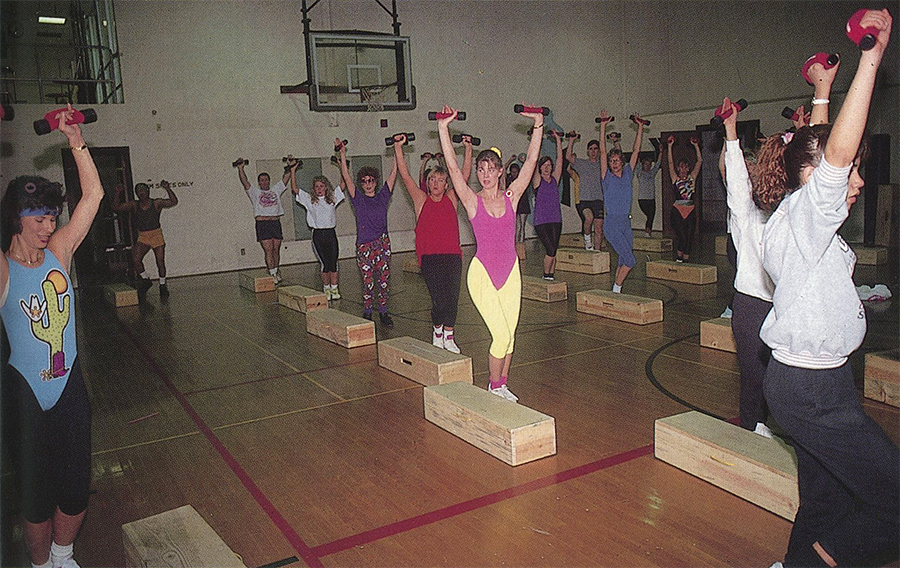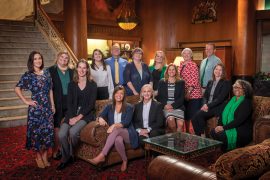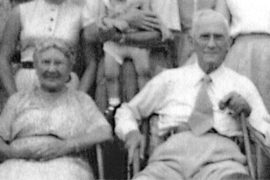With over a century of tradition, Huntington’s Y is regarded as one of the best in the country
By Jeanette Rowsey
HQ 7 | SPRING 1991
It’s a Saturday morning in Huntington. In a cool, carpeted exercise room at 935 Tenth Avenue, a woman reads a book as she treads a Stairmaster machine. She seems oblivious to the dozens of men and women around her in t-shirts, gym shorts and leotards who are doing Nautilus, pedaling computerized LifeCycles and working out on equipment, until she looks up to wave to a friend who has just walked in. Seeing that she’s completed her stepping cycle, she slows to a stop and moves to another group of machines. Her face has a slight pink glow as she smiles and joins her friend.
Six blocks away, in a noisy gym at 1057 Sixth Avenue, a nine-year-old boy guards his opponent in a Buddy Basketball Tournament play-off game. His eyes show intense concentration as he keeps in mind what his volunteer coaches have taught him, all the while trying to outguess the boy in front of him. As his opponent suddenly passes, he is there, grabbing the ball, dribbling forward, passing to hIs waiting teammate. When his buddy makes the basket, the boy’s face breaks into a wide grin.
They may be blocks and worlds apart, but the woman and the boy share a bond which goes beyond physical exercise. They are connected by an idea, and an enterprise, which begins with the letter Y.
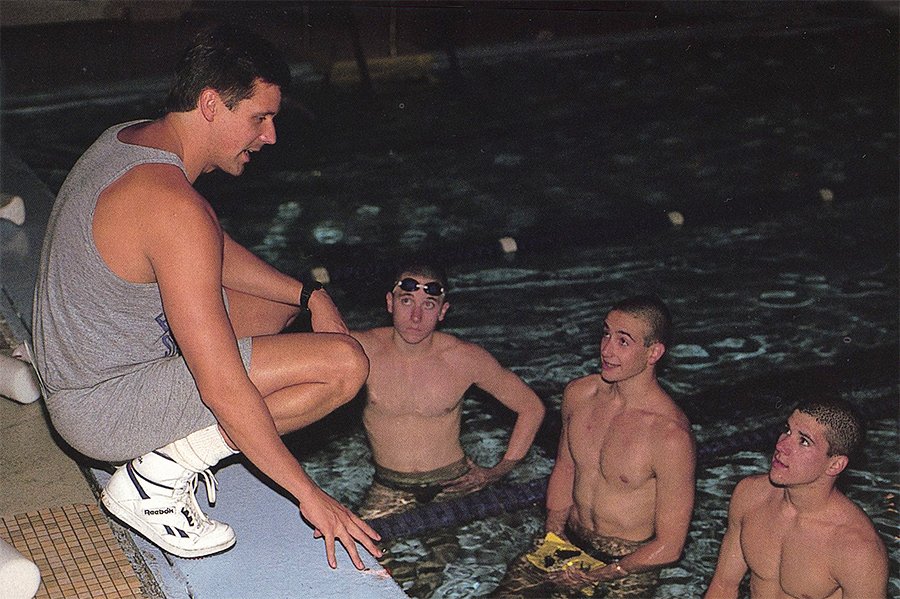
The Huntington YMCA has about 8,500 Huntington area members. All these people, and some of the many programs which occupy the Huntington YMCA facilities, would seem to contradict the name-The YoungMens’ Christian Association. Those who go to the YMCA are not necessarily “young”Huntington Y members range from 3 months to 87 years of age; not necessarily “men” – nearly half the local members are women; and not necessarily “Christian.” Founded on Christian principles, the Y opens its doors to all, regardless of religious persuasion, race or nationality.
But according to Jack Jones, executive director of the Huntington YMCA, the Y’s members and its many programs reflect a single mission-“to put Christian principles into practice through programs that build healthy bodies, minds and spirits for all.”
That mission remains the unwavering philosophy behind an organization which has undergone phenomenal change and has had an immense impact on people’s lives in the last century-and-a-half.
Yesterday’s Y
The YMCA movement began in London, England in 1844, founded by a young drapery clerk named George Williams who wanted to provide young men with an alternative to the rough streets of 19th Century London. The Y’s primary activity of that time was to develop a library and reading room to conduct discussions, lectures and Bible study groups.
The first YMCA in the United States was opened in Boston in 1852, by a retired American sea captain who saw the influence the London group was having on young men. The Boston Y offered a library of several hundred books, regular prayer meetings, Bible classes, evangelistic meetings, lectures, help in finding jobs, a list of decent Boston boarding houses and an aggressive social program.
Although the opening of Boston’s Y was barely noted that year, it was nonetheless startling how quickly the YMCA idea spread. By 1859, there were over 100 YMCAs scattered throughout the country. Educational programs, such as music, language and gymnastics, began to assume major emphasis in the YMCA movement. In the late 19th century the United States YMCA was pioneering across a wide front-serving people of all religious faiths; developing the concept of unity of body, mind and spirit; helping to organize Boy Scouts and Camp Fire Girls; and becoming the nation’s leader in health education and physical fitness, with such innovations as basketball and volleyball (games which were both invented by Y directors).
During that time, a Huntington banker named M.C. Dimmick urged his fellow townspeople to begin a YMCA for the young city. In 1885, rooms were rented in the Palmer Building on Third Avenue west of Ninth Street, and by 1891 the entire third floor of the Parsons Building on Ninth Street was rented to expand the YMCA program.
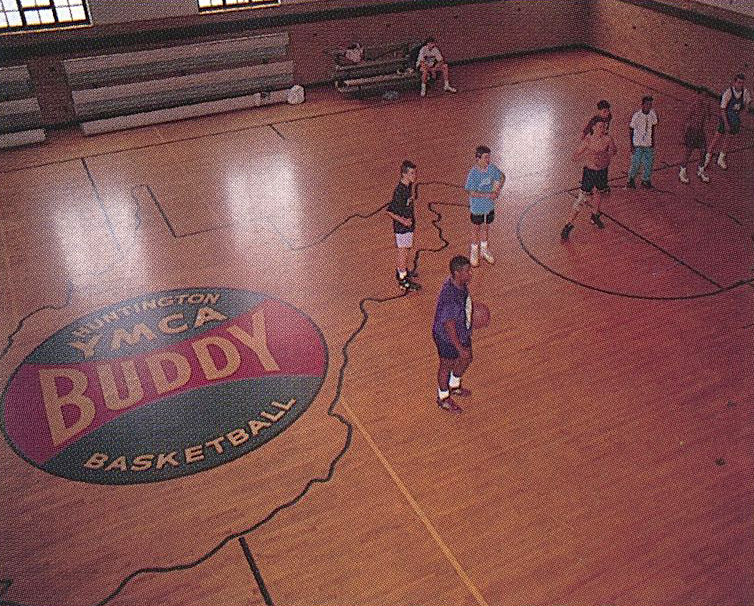
Through the first half of the twentieth century, expansion of the Huntington YMCA was slowed by hardships imposed by two wars and the Depression. But under the leadership of such men as C.S. Campbell, John Ensign, Frank Deerhake and Walker Long, the community was able to invest in a YMCA building on Sixth Avenue and Eleventh Street. Along the way, physical fitness, education and leadership services grew, offering youth activities such as exercise classes, cross country racing on Huntington streets and competitive swimming.
In 1953, the Huntington Y embarked on a new age when Edwin P. May donated the Presbyterian Recreation Building on Tenth Avenue. This facility was used for several years for many teenage programs.
Soon after that, the Sixth Avenue location added a large youth center and the May Building began offering fitness and health programs geared to adults.
Through the ’60s and ’70s major capital expansion programs provided for a new pool, running tracks and locker rooms, two gymnasiums, racquetball courts, a fitness lab and other improvements to the May Building, as well as renovations at the C.D. Lauer Youth Building.
By 1980, local Y members and staff had created programs for the Huntington community which included community learn-to-swim campaigns, youth basketball, soccer, competitive swimming, Little League, the “Y Not” handicapped fitness program (a precursor to today’s Special Olympics), and countless others. The Huntington YMCA had firmly established itself as the community’s recreation and fitness leader.
And so the groundwork was laid for Huntingtonians to make their YMCA one of the nation’s finest.
Today’s Y
The Huntington Y opens its doors to YMCA members from across the country, as well as other visitors. A recent guest left this note:
“I travel all over the world and in each destination I find a place to exercise. Of all the places I have ever been, this Y is the best. It’s clean, friendly, well equipped. Please keep up the good work.”
Executive Director Jack Jones, who has been on the Y staff since 1962, has good reason to be proud of that letter. It reflects an active board and staff who share a single purpose: to be the best YMCA in the country.
“Most of our full-time staff have made the YMCA their career. This is unusual in a YMCA operation. The Y has only really had four directors in its 100 year history,” said Jones, who has himself been the director since 1974.
“We really try to keep the volunteers in charge of the organization,” Jones said, emphasizing that all 27 board members and most of the senior advisory board members are active Y users. “We have a strong, active board and committee structure which makes this an integral part of the community.”
The involvement of volunteers and the stability provided by the professional staff have resulted in an organization which listens to its members and acts on new ideas – scuba diving, soccer for boys & girls, an impressive adult fitness and sports program, cardiac rehabilitation, arthritis rehabilitation, a wellness program for the blind, a state licensed day care program, an aquatic safety playground for young children and a senior wellness and fitness program.
The adult fitness center is probably the best-known local Yasset. The YMCA May Building on Huntington’s south side is more than a gym. As Jones puts it, “We’re Huntington’s recreation and fitness mall.”
The center is bright and clean. The walls of the three-story building present a history of the city’s athletic achievers and contributors to the Y vision. A tour of the multi-story health center shows an assortment of fitness facilities: the nautilus/healthy heart circuit, free weight room, universal weight room, three racquetball courts, indoor running/walking track, two gymnasiums, indoor pool, whirlpool, classrooms, an exercise testing room and locker rooms each equipped with a massage department, steam room, sauna, tanning beds and lounge.
The setting provides social benefits as well. It has been said that the steam rooms at the May Building are a much better source of grapevine information than the local paper. And in a healthconscious society, the local Y has virtually taken the place of singles bars as a fashionable meeting place. People who share a fitness lifestyle often find other things in common.Jones acknowledges that a number of men and women meet, and eventually marry, through friendships which began at the Y.
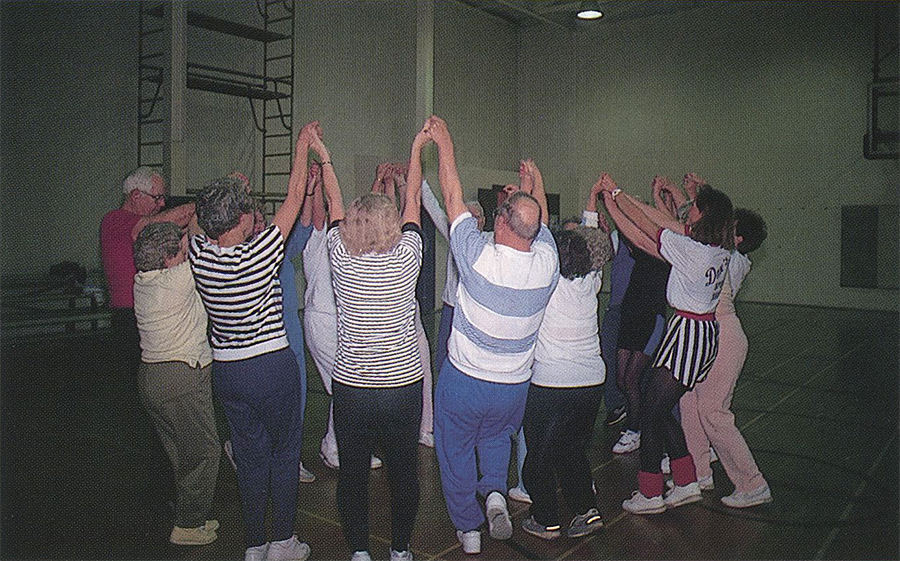
The Y’s health club members may not think about the meaning of their membership to others in the community. Hundreds of children are recommended for and receive “no questions asked” free youth memberships each year, and take part in activities at the Sixth Avenue youth center.
A portion of paid adult and family membership dollars, as well as United Way funding, takes care of many special needs.
Like the May Building, the CD.Lauer Youth Building has two gymnasiums, plus an indoor running track and pool. There are also locker rooms, a gameroom, gymnastics/tumbling room, weight room, and a state-licensed day care program which provides pre-school and after-school care to meet the needs of working families.
The Y had one of its first competitive swim teams in Huntington in the 1930s and continues to provide school-aged children around the region with a strong competitive swim program. Taught by former “All American” John Tudor and his wife Lydia, the program supports some of the area’s most disciplined competitive swim teams. Other competitive sports for boys and girls made possible by the YMCA are basketball, soccer, gymnastics and weight training.
The Y’s progressive swim program has provided countless area residents, from babies to grandparents, with yearround lessons. In addition, National YMCA Arthritis Water Exercise sessions are open to any physician-referred-patient in the area.
The Y mission is carried further to special groups who hunger for the physical and spiritual benefits of healthy leisure time programs. A number of community agencies, shelters and hospitals receive blocks of scheduled time for their clients to swim, exercise and rediscover the joy of playtime.
Tomorrow’s Y
The YMCA continues to generate big ideas with plans to benefit more community residents.
The Glenbrier Family Outdoor Center near Lesage has been added to the list of popular YMCA recreation facilities. In addition to summer pool and picnic use, the YMCA plans to develop a softball complex on the property for girls, adults and weekend programs. Community-based programs (such as afters chool and vacation care, aerobics classes, specialized lessons and competitions) are growing both at the Glen brier and at the YMCA West center in Kenova. The board is now looking for a location in the Barboursville area.
Corporate fitness programs are growing, Jones said, both in terms of group memberships and corporate sponsorships of special community fitness activities. The Y continues to bring in new members, participants, volunteers and dollars to build on.
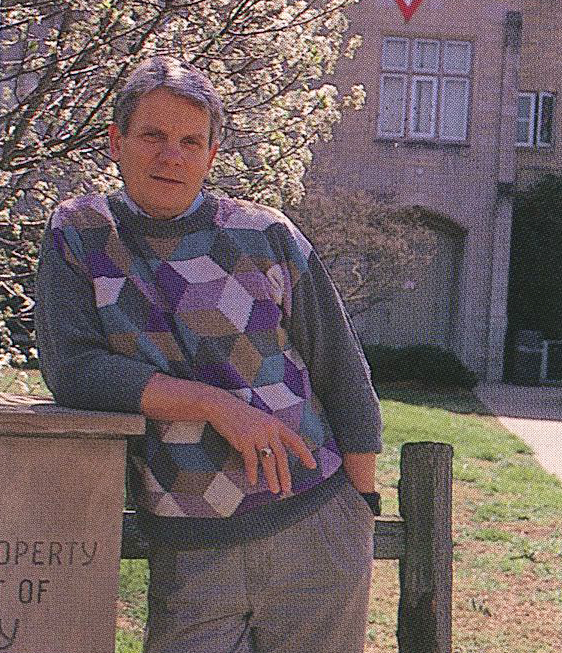
“Our YMCAs turn over approximately 1.5 million dollars per year, employ 75 people and bring in new dollars well over$500,000 per year,”Jones said. “We provide an attraction to industry and a better standard of living for Huntington’s citizens.”
Newspaper columnist Rob Robinson wrote, “Once you live someplace where there is no ‘Y,’ your appreciation soars. For the presence of an active ‘Y’ indicates an unselfish spirit in a town. It indicates there is some leadership, and that there are people who are willing to give their time, talent and money for unselfish reasons simply to make the community a better place in which to live.”
If Huntington’s YMCA can be seen as a manifestation of the city’s leadership, growth potential and caring spirit, then the people who live around Huntington have a lot to look forward to.

